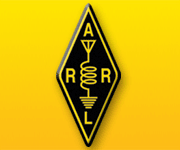World Radiocommunication Conference 2015 Starts on November 2
Amateur Radio’s interests will be well represented as the 2015 ITU World Radiocommunication Conference (WRC-15) convenes on November 2 in Geneva, Switzerland. Preparations have been under way since the last WRC wrapped up in 2012. Held every 3 or 4 years, WRCs review, and, if necessary, revise the Radio Regulations — the international treaty governing the use of the radio frequency spectrum. Delegates will consider several items of interest to the Amateur Radio community during the nearly month-long international gathering. Two ARRL staff members will be on the US delegation to WRC-15 — Chief Technology Officer Brennan Price, N4QX, and Technical Relations Specialist Jon Siverling, WB3ERA. International Amateur Radio Union (IARU) President Tim Ellam, VE6SH/G4HUA, and several others will be on the IARU team or in other delegations.
The primary WRC-15 agenda item of interest to most radio amateurs is Agenda Item 1.4, which calls on delegates to consider the possibility of allocating an appropriate amount of spectrum — not necessarily contiguous — to the Amateur Service on a secondary basis within the band 5250-5450 kHz. Many amateurs have been hoping for a band, rather than the discrete channels now available in the US and in several other countries.
“While efforts of the IARU and its member societies have led four regional organizations to make affirmative proposals — two of them quite generous — the outcome of this item remains uncertain,” said ARRL CEO David Sumner, K1ZZ, who will be attending WRC-15 briefly to support the IARU team.
He explained that several major countries, including Canada, Russia, the UK, and the US, view an allocation in the triple digits of kilohertz as too generous and, except for Russia, have not signed on to regional proposals. Russia leads a regional proposal for no change. Canada has proposed allocating 50 kHz in two 25 kHz blocks, but several countries, including the US, are on record as opposing an allocation.
“We are disappointed that the United States was unable to join the Inter-American Proposal (IAP), which is admittedly more generous than we expected the US to be able to support,” Sumner said. “With the neighboring countries of Mexico supporting the IAP, Canada proposing two 25 kHz segments, and Cuba proposing a contiguous 27 kHz band, and with affirmative proposals for an amateur allocation having been submitted on behalf of dozens of other countries, we remain hopeful that a positive consensus will emerge that the US, in the end, will be able to accept.”
Countries opposed to any change have argued that propagation characteristics near 5 MHz are ideal to support reliable operation of the incumbent HF services. Current primary non-government occupants of the band are fixed and mobile services, except aeronautical mobile, and radiolocation in the 5250-5275 kHz segment.
Other WRC-15 items that could affect Amateur Radio include:
- Agenda Item 1.1, to consider additional spectrum for mobile services on a primary basis and identification of additional bands for commercial mobile telephony and data service — in essence, smartphones. In 2007, nearly 90 countries identified 3400-3500 MHz in the amateur 9 centimeter band for this purpose. Efforts to maintain amateur access to this band since then has been a country-by-country effort. The US has said that it will not implement mobile telephony and data services at 3400-3550 MHz, due to its use by incumbent services, including radiolocation and Amateur Radio.
- Agenda Item 1.6.1 will consider possible additional primary allocations for the fixed-satellite service of 250 MHz between 10 GHz and 17 GHz in Region 1. It also would review regulatory provisions on current fixed-satellite service allocations, taking ITU-R studies into account. The amateur 10 GHz allocation is not a potential target.
- Agenda Item 1.10 seeks additional mobile-satellite allocations, including the satellite component of broadband applications, including mobile telephony and data services, in the range from 22 to 26 GHz. The amateur 24 GHz allocation has not been identified by proponents as a potential solution.
- Agenda Item 1.12 would consider extending the current worldwide allocation to the Earth exploration-satellite (active) service (EESS) in the band 9300-9900 MHz by up to 600 MHz, which would intrude into the amateur 10 GHz allocation. Although EESS is likely to obtain a primary allocation that overlaps the 10 GHz band in full or in part, its impact on Amateur Radio would likely be nominal.
- Agenda Item 1.18 will address automotive radar applications at 77.5-78.0 GHz. Studies have indicated general compatibility with these applications and Amateur Radio, and, in any case, the primary status of Amateur Radio is not proposed to be downgraded.
Emergency Communication Display at ITU
A demonstration of the modes and equipment available to Amateur Radio for emergency communication, will be on display at WRC-15. The November 4-14 mobile display of equipment capable of voice, text, and image modes, as well as mobile antennas was developed in a series of planning meetings with the IARU and ITU. IARU International Coordinator of Emergency Communications Hans Zimmermann, HB9AQS/F5VKP, will be on hand at the display in Geneva. Notfunk Deutschland e.V. (Emergency Radio Germany Association) will provide the equipment in collaboration with the Deutscher Amateur Radio Club (DARC). Other European IARU member societies will provide posters and other materials.
“This will not be a Field Day station or even a simulated emergency or other intensive operational activity,” Zimmerman has explained. “The purpose is to show how the wide range of means allows the Amateur Service to serve in an emergency situation.”
Radiocommunication Assembly
Leading up to WRC-15 is the ITU Radiocommunication Assembly (RA-15), under way this week at ITU headquarters in Geneva. The Assembly is responsible for the structure, program, and approval of radiocommunication studies. The Assembly also elects the chairmen of the six Study Groups in the ITU Radiocommunication Sector (ITU-R).
Back





